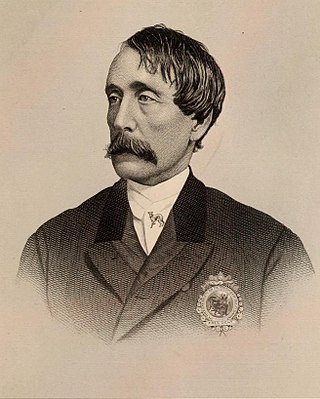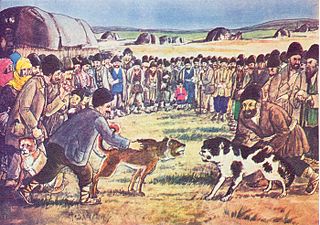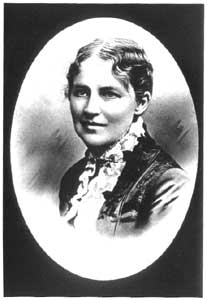
Henry Bergh founded the American Society for the Prevention of Cruelty to Animals (ASPCA) in April, 1866, three days after the first effective legislation against animal cruelty in the United States was passed into law by the New York State Legislature. One of the tasks he undertook was to pass a law that would prohibit the use of dogs for the monotonous and hot task of turning grills in restaurants. He made it. Later, when Bergh went to visit restaurants to monitor law enforcement, he discovered that numerous restaurants had replaced dogs with black children. Therefore, Bergh also prompted the formation, in 1874, of the New York Society for the Prevention of Cruelty to Children (MSPCC).
The American Society for the Prevention of Cruelty to Animals (ASPCA) is a non-profit organization dedicated to preventing animal cruelty. Based in New York City since its inception in 1866, the organization's mission is "to provide effective means for the prevention of cruelty to animals throughout the United States."

Dog fighting is a type of blood sport that turns game and fighting dogs against each other in a physical fight, often to the death, for the purposes of gambling or entertainment to the spectators. In rural areas, fights are often staged in barns or outdoor pits; in urban areas, fights are often staged in garages, basements, warehouses, alleyways, abandoned buildings, neighborhood playgrounds, or in the streets. Dog fights usually last until one dog is declared a winner, which occurs when one dog fails to scratch, dies, or jumps out of the pit. Sometimes dog fights end without declaring a winner; for instance, the dog's owner may call the fight.

A humane society is a group that aims to stop cruelty to animals. In many countries, the term is used mostly for societies for the prevention of cruelty to animals (SPCA). In the United Kingdom, and historically in the United States, such societies provide waterway rescue, prevention and recovery services, or may give awards for saving human life.

The National Society for the Prevention of Cruelty to Children (NSPCC) is a British child protection charity founded as the Liverpool Society for the Prevention of Cruelty to Children (LSPCC) by Thomas Agnew on 19 April 1883. The NSPCC lobbies the government on issues relating to child welfare, and creates child abuse public awareness campaigns. Since the 1980s, the charity has had statutory powers allowing it to apply for help on behalf of children at risk. In the 1990s, the charity's publication, Satanic Indicators, fueled panic in social workers who went and accused parents and removed children from homes when they should not have. It operates a help line. The Paddington Bear character has partnered with the charity to raise funds for the charity. NSPCC operates telephone helplines.

Animal hoarding, sometimes called Noah syndrome, is keeping a higher-than-usual number of animals as domestic pets without the ability to properly house or care for them, while at the same time denying this inability. Compulsive hoarding can be characterized as a symptom of a mental disorder rather than deliberate cruelty towards animals. Hoarders are deeply attached to their pets and find it extremely difficult to let the pets go. They typically cannot comprehend that they are harming their pets by failing to provide them with proper care. Hoarders tend to believe that they provide the right amount of care for them. The American Society for the Prevention of Cruelty to Animals provides a "Hoarding Prevention Team", which works with hoarders to help them attain a manageable and healthy number of pets.

An animal control service or animal control agency is an entity charged with responding to requests for help with animals, including wild animals, dangerous animals, and animals in distress. An individual who works for such an entity was once known as a dog catcher, but is generally now called an animal control officer, and may be an employee or a contractor – commonly employed by a municipality, county, shire, or other subnational government area.

Cruelty to animals, also called animal abuse, animal neglect or animal cruelty, is the infliction of suffering or harm by humans upon non-human animals, either by omission (neglect) or by commission. More narrowly, it can be the causing of harm or suffering for specific achievements, such as killing animals for entertainment; cruelty to animals sometimes encompasses inflicting harm or suffering as an end in itself, referred to as zoosadism. Divergent approaches to laws concerning animal cruelty occur in different jurisdictions throughout the world. For example, some laws govern methods of killing animals for food, clothing, or other products, and other laws concern the keeping of animals for entertainment, education, research, or pets. There are several conceptual approaches to the issue of cruelty to animals.

Child abuse is physical, sexual, emotional and/or psychological maltreatment or neglect of a child, especially by a parent or a caregiver. Child abuse may include any act or failure to act by a parent or a caregiver that results in actual or potential wrongful harm to a child and can occur in a child's home, or in organizations, schools, or communities the child interacts with.

In criminology, public-order crime is defined by Siegel (2004) as "crime which involves acts that interfere with the operations of society and the ability of people to function efficiently", i.e., it is behaviour that has been labelled criminal because it is contrary to shared norms, social values, and customs. Robertson (1989:123) maintains a crime is nothing more than "an act that contravenes a law". Generally speaking, deviancy is criminalized when it is too disruptive and has proved uncontrollable through informal sanctions.
The Massachusetts Society for the Prevention of Cruelty to Children (MSPCC) is a non-governmental charitable organization with offices in Boston and throughout Massachusetts which seeks to strengthen families and prevent child abuse through essential child welfare and mental health treatment and effective public advocacy.
Child protective services (CPS) is the name of an agency in many U.S. states responsible for providing child protection, which includes responding to reports of child abuse or neglect. Some states use other names, often attempting to reflect more family-centered practices, such as department of children and family services (DCFS). CPS is also sometimes known by the name of department of social services, though these terms more often have a broader meaning.

Elbridge Thomas Gerry, usually called "Commodore" Gerry due to the office he held with the New York Yacht Club from 1886 to 1892, was an American lawyer and reformer. His paternal grandfather was U.S. Vice President Elbridge Gerry.
Children 1st, previously known as the Royal Scottish Society for Prevention of Cruelty to Children, is a Scottish charity which aims to give every child in Scotland a safe and secure childhood. Children 1st supports families under stress, protects children from harm and neglect, promotes children's rights and helps children recover from abuse.

Mary Ellen Wilson, also called Mary Ellen McCormack, was an American victim of child abuse whose case led to the creation of the New York Society for the Prevention of Cruelty to Children, the first child protection agency in the world. At the age of eight, she was severely abused by her foster parents, Francis and Mary Connolly. Because she was assisted by Henry Bergh, then the head of the American Society for the Prevention of Cruelty to Animals, some sources incorrectly state that statutes against cruelty to animals had to be used to remove her from the home. Hers was the first documented case of child abuse in the United States.

The ASPCA Humane Law Enforcement Division was the law enforcement arm of the American Society for the Prevention of Cruelty to Animals (ASPCA) from 1866 until 2013, when the law enforcement division was disbanded. The agency enforced humane laws, and investigated cases of animal cruelty.

The New Jersey Society for the Prevention of Cruelty to Animals is a law enforcement agency in the state of New Jersey that focuses on humane law enforcement. The agency enforces animal-related laws and investigates cases of animal cruelty. In January 2018, Governor Chris Christie signed a bill intended to dissolve the organization and transfer animal cruelty law enforcement to county prosecutors, municipalities, and county SPCA agencies. The NJSPCA will cease law enforcement operations by August 1, 2018. The agency was disbanded in 2018 after a State Commission of Investigation Reports (SCI) showed that the agency could not account for over 700K in Attorney fees, mismanaged bank accounts, and businesses created by its board members. The agency was virtually bankrupt at the time it was disbanded due to a lack of oversight. The NJSPCA was sued in 2015 under the Open Public Record Act in which it spent 140K on Attorney's fee's. It was order on 4 separate occasions that they were a Government Agency and subject to OPRA. See Sci Report https://www.nj.gov/sci/pdf/SPCA-FollowUpReport.pdf
Child sexual abuse laws in the United States have been enacted as part of the nation's child protection policies.

Etta Angell Wheeler was the rescuer and advocate of Mary Ellen Wilson, whose infamous abuse story led to the creation of the New York Society for the Prevention of Cruelty to Children. Wheeler was also influential in the society's creation because she convinced future founder of the society, Henry Bergh, who at the time was founder of the American Society for the Prevention of Cruelty to Animals, to take on the issue and spearhead the case.
In many parts of the world, mandated reporters are people who have regular contact with vulnerable people such as children, disabled persons, and senior citizens, and are therefore legally required to ensure a report is made when abuse is observed or suspected. Specific details vary across jurisdictions—the abuse that must be reported may include neglect, or financial, physical, sexual, or other types of abuse. Mandated reporters may include paid or unpaid people who have assumed full or intermittent responsibility for the care of a child, dependent adult, or elder.















